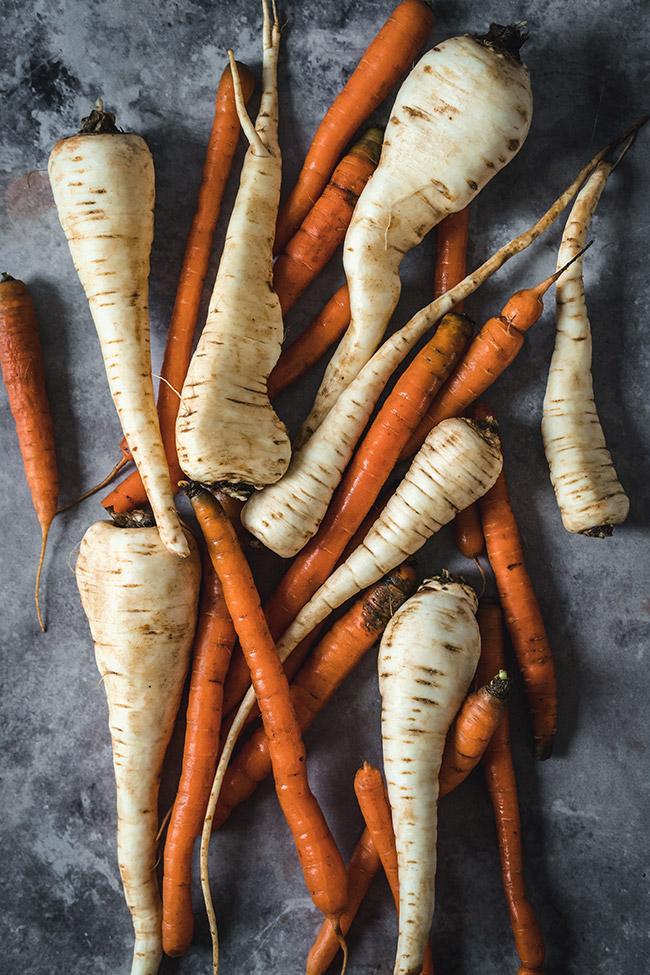
Carrot seed is also sometimes available in a seed tape comprised of a paper strip embedded with evenly spaced seeds. Pelleted seeds have an inert, clay-based material coating the individual seeds, making them larger in size and easier to plant in well-spaced rows. Pelleted seed is available for easier planting. Because of this, thinning after plants emerge is important. The seed is very small and difficult to evenly plant in rows. To thin, cut the top off unwanted seedlings at soil level, rather than pulling the young plant so as not to disturb the surrounding soil.

After the seedlings emerge and are 3 to 4 inches tall, thin the planting so the remaining plants are 2 to 4 inches apart. Seedlings can be slow to germinate, taking as long as three weeks to emerge, especially when soil temperatures are cold. Do not sow seed indoors in containers for transplanting as they do not transplant easily. Sow carrot or parsnip seed directly in the garden ¼ to ½ inches deep in rows 18 to 24 inches apart.
PARSNIPS AND CARROTS FULL
Grow in full sun, providing at least six hours of direct sun a day. Containers are not a good option for growing carrots or parsnips because they do not provide enough room for the large tap roots to form. Cultivars that produce shorter roots will also perform better in less-than-ideal soils. If soils are not ideal, grow these root crops in raised beds or amend the soil with compost to improve soil conditions. When soils are heavy, rocky, or compacted, roots are often smaller and irregular in shape. Loamy, sandy soil is ideal to allow uniform root development. Site SelectionĬarrots and parsnips grow best in moist, well-drained soils that are not compacted. Just be sure to dig them in the spring before they send up a flower stalk as the flavor declines if the plant is allowed to bolt in spring. These cold-hardy plants will even tolerate staying in the ground over winter and harvested early the following spring. The longer the parsnips stay in the ground in the fall, the sweeter they will be. The frost is important to help the long roots to develop good flavor. Parsnips are planted in early to mid-spring and remain in the garden until frost in the fall. Learn about suggested carrot varieties for your garden in this article: What are some good carrot varieties for Iowa?

By staggering the plantings, you have some carrots coming into maturity each week rather than an entire crop all at once. These plants benefit from succession planting. The last practical planting date for carrots in Iowa is August 1 st. In Iowa, plan to plant carrots in early April and sow staggered plantings every 2 to 3 weeks through summer. Parsnips are a long-season crop that takes 100-120 days to mature enough to harvest.

Depending on variety, carrots are ready to harvest 50 to 60 days after planting. Planning | Site Selection | Planting | Growing & Care | Potential Problems | Harvest & StorageĬarrots and parsnips grow best in the cool temperatures of spring and fall. Both are great additions to the Iowa vegetable garden. Parsnips are close relatives of carrots and have a more subtle, sweeter, nuttier flavor.

Carrots are one of the most popular garden vegetables and come in colors beyond the traditional orange, including purple, red, yellow, and white. Carrots and parsnips are root vegetables that do well in cooler conditions.


 0 kommentar(er)
0 kommentar(er)
